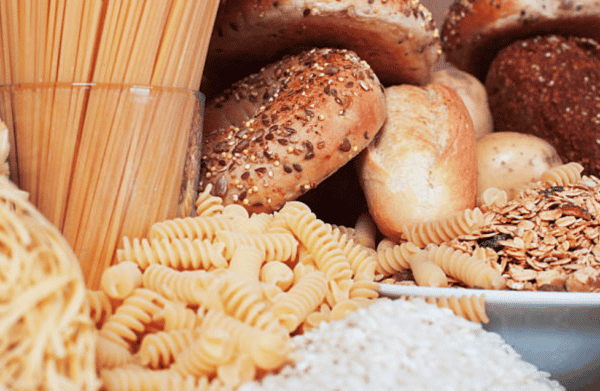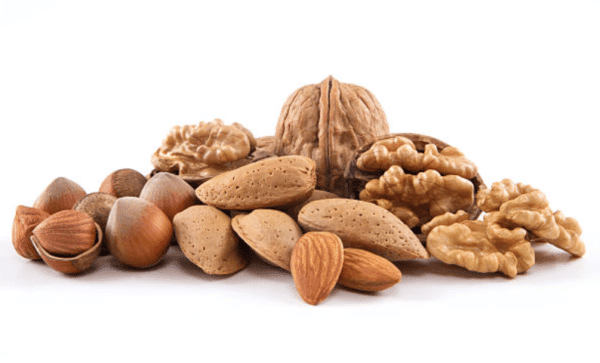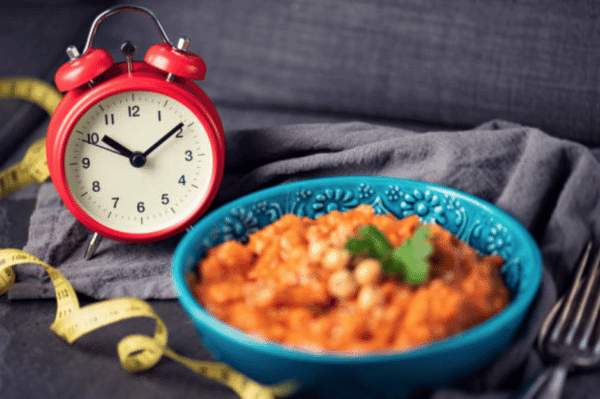Les étiquettes alimentaires sont une source d’information très importante. Savoir lire les informations nutritionnelles fait partie des réflexes à avoir qui sont indispensables pour une alimentation équilibrée en musculation. Et surtout, elle permet de contrôler le nombre de calories que nous consommons en adéquation avec nos objectifs lorsque nous pratiquons la musculation.
Que ce soit pour une diète de maintenance, une diète de prise de masse ou pour une perte de gras mais aussi pour notre santé. Pourtant, beaucoup d’entre nous ne savent pas le faire. Nous allons donc essayer d’y voir plus clair dans cet article.
Lire une étiquette nutritionnelle, en bref :
- Lire les étiquettes alimentaires est essentiel pour contrôler ses calories.
- Une liste d’ingrédients courte garantit moins d’additifs, de sucres et de graisses nocives.
- Surveiller la quantité de lipides est crucial pour la santé cardiovasculaire.
- Les glucides sont indispensables à l’énergie musculaire, mais il faut limiter les sucres ajoutés.
- Les protéines sont essentielles pour construire du muscle.
- Le sodium en excès favorise l’hypertension.
Sommaire
Comprendre une étiquette alimentaire
Le ministère de la santé a fait passer une loi santé en france sur l’obligation d’apposer un étiquetage alimentaire. L’objectif de ce dispositif est d’atteindre une transparence sur les ingrédients ajoutés, de connaitre les informations nutritionnelles des aliments emballés et produits industriels fournis par les industries agroalimentaires que nous consommons.
La sécurité des aliments est une des priorités du programme national mis en place pour aider les consommateurs à manger sainement et ainsi lutter contre les maladies causées par l’alimentation comme l’obésité, les maladies cardiovasculaires, la rétention d’eau et bien d’autres souffrances plus ou moins graves qui nuiraient à notre santé.

Sur chaque produit se trouve un petit tableau avec un code couleur et une lettre qui mentionne la valeur nutritionnelle de chaque ingrédient. Ils vont de A à E sachant que le A est vert donc normalement bon et le E est rouge donc mauvais. C’est ce que l’on appelle le Nutri-Score.
Tout est ainsi étiqueté et mis à disposition afin que nous puissions comprendre ce que nous mettons dans nos assiettes. Mais en réalité, combien d’entre nous prennent la peine de lire une étiquette et de s’intéresser à ce que nous mangeons? La plupart des sportifs d’aujourd’hui le font mais ce n’est pas ancré dans nos habitudes.
Voici quelques conseils sur les réflexes à avoir lorsque nous regardons une étiquette alimentaire de produit congelé, en conserve ou préemballée, afin d’avoir les micronutriments et macronutriments nécessaires à nos besoins énergétiques et une alimentation équilibrée.
Les éléments d’une étiquette alimentaire
Regarder la taille de la liste des ingrédients
Toutes ces informations sont rarement mises en avant par les industries alimentaires sur la face avant du produit, il faudra donc s’habituer à les chercher. Et si nous ne le faisons pas, c’est essentiellement pour 2 raisons : la première, nous n’avons pas le temps et la seconde, nous prenons les aliments qui nous donnent envie.
L’équilibre alimentaire passe par des aliments dont la liste d’ingrédients est la plus courte possible pour qu’il n’y ait pas trop d’édulcorants, de conservateurs, d’ingrédients transformés et de sucre et sel rajoutés.
Présents entres autres dans les plats préparés, ils sont de véritables perturbateurs endocriniens entrainant des maladies cardiovasculaires, des allergies alimentaires et des problèmes gastriques.
Les ingrédients
Les ingrédients sur l’étiquette sont listés en petit dans l’ordre d’importance de quantité. Il peut y avoir également tous les conservateurs, les édulcorants, les additifs, des agents de textures, les différents sucres et d’autres composants. C’est au moment de la lecture que l’on peut se rendre compte qu’un aliment au chocolat par exemple, contient autant de sucres voire plus que de chocolat.
Toujours choisir les éléments nutritifs dont la liste d’ingrédients est courte, car plus elle est longue, plus nous pouvons être sûrs que des ingrédients transformés ont été ajoutés.
L’ordre des ingrédients est déterminant car ils sont listés par ordre décroissant de quantité. Si par exemple le sucre est premier de la liste, mieux vaut faire une croix sur le produit.
Les valeurs nutritionnelles
Sur votre étiquette, elle regroupe l’ensemble des valeurs ci dessous.
Les calories
Les calories sont des unités qui mesurent l’apport d’énergie qui se trouve dans les aliments que nous consommons. Lorsque nous mangeons, le nombre de calories journalières doit être respecté.
Pour ceux et celles par exemple qui veulent éviter une prise de poids et donc de gras, ou lorsque vous êtes en sèche (perte de gras), il est conseillé de choisir des produits alimentaires dont la valeur n’est pas excessive et qui soit riche en fibres et faible en lipides.
Sur l’étiquette, elle est retranscrite sous le nom de valeur énergétique avec une colonne pour l’aliment entier et une autre colonne avec la valeur pour une portion donné.

DÉCOUVREZ MON CALCULATEUR DE CALORIES
Les lipides
Dans les lipides, on trouve les acides gras poly-insaturés et mono-insaturés, les matières grasses saturées et trans qui sont les différentes graisses contenues dans un aliment. Elles peuvent être animales ou végétales.

Les acides gras Poly-instaurés : Oméga 3 et 6 comme les graines de lin par exemple sont bons pour le système cardio-vasculaire.
Les acides gras Mono-insaturés : Oméga 9 comme l’avocat, l’huile d’olive, les noix et les oléagineux par exemple, qui contrôlent en l’occurrence la glycémie.
Les graisses saturées : beurre, fromage, graisse de porc, huile de palme par exemple, à ne pas consommer en excès car elles font augmenter le mauvais cholestérol. Il ne faut cependant pas les supprimer complètement de notre alimentation. En effet, notre corps doit avoir un ratio de bons et mauvais cholestérol.
Les graisses trans : les margarines, les huiles de friture par exemple. Ce sont les pires lipides qui jouent un rôle néfaste sur le mauvais cholestérol et les triglycérides. Ces graisses ont pour rôle de conserver les aliments plus longtemps notamment. Il ne faudrait normalement pas les inclure dans notre alimentation. C’est en partie à cause de leur consommation que les risques de maladies se manifestent.
Les lipides ne devraient pas dépasser 30 % de notre alimentation. Nous devrions consommer la moitié de notre apport en lipides par les acides gras mono-insatuées, un quart avec les acides gras poly-insaturés et le dernier quart avec des graisses saturées.
Pour reprendre notre exemple pour perdre du poids, évitez tout ce qui présente un taux de matière grasse important. Certains produits qui en contiennent beaucoup amèneront le consommateur à grossir s’il ne fait pas d’exercices physiques et seront nuisibles sur le long terme. Que nous pratiquions la musculation ou pas de sport du tout revient au même quant à la consommation de mauvaises graisses.
Sur l’étiquette, elle porte le nom de lipides avec une petite ligne en italique acides gras saturés ou trans.
Les glucides
La fonction des glucides est de fournir l’énergie nécessaire au corps. En quelque sorte le carburant de notre organisme, il sera transformé en glucose pour alimenter les muscles et le coeur. La plupart des étiquettes alimentaires affichent le taux de glucides que contient l’aliment, mais le terme glucide ne fait pas de différence parmi les types de sucres.
Tous les glucides ne sont pas des sucres ajoutés et cela n’ai pas spécifié sur les étiquettes. Néanmoins, le sportif en as besoin pour alimenter son organisme et avoir l’énergie nécéssaire lors de l’entrainement et cela surtout en prise de muscle. En effet, beaucoup de pratiquants cyclent les glucides.

Les glucides se tranforment bien souvent en sucre et il y a plusieurs types. Il y a les bons glucides et les mauvais. C’est à dire les glucides à index glycémique bas et haut.
Sur l’étiquette, elle porte le nom de glucides dont sucres en italique qui sont les sucres ajoutés.
Pour les sportif, ils sont tout deux indispensables puisqu’après l’entrainement, ils privilégieront les sucres rapides.
Le sucre
Il y a énormément de type de sucres, mais là encore, l’étiquette alimentaire ne vous donnera pas le genre. Une plante peut par exemple contenir du sucre appelé saccharose qui provient naturellement de la plante, alors que le sirop de glucose est lui du sucre ajouté. Tout comme les boissons sucrées ou boissons gazeuses qui contiennent du sucre rapide ajouté.
Les industriels ne sont pas forcément clairs sur la distinction entre sucre naturel et sucre ajouté, ce qui peut pousser à consommer un produit qui fait exploser le taux glycémique.

Il faudra de toute façon, consommer des aliments qui contiennent le moins possible de sucre. En effet, le sucre apporte des calories ne contenant ni fibres, ni vitamines et minéraux donc peu intéressant.
Lorsque vous voyez sur une étiquette « allégé en sucre » cela veut dire qu’il contient 30 % de sucre en moins qu’un produit de la même gamme. Donc cela ne signifie pas forcément qu’il n’est pas beaucoup sucré. C’est d’ailleurs l’un des pièges à éviter.
Souvent les produits allégés en sucres contiennent plus de lipides, et vice versa, ce qui n’est pas forcément intéressant.
Une alternative au sucre : Les édulcorants comme la stévia ou l’aspartame. Certains aliments en seront composés.
Sur l’étiquette, on les trouve sous les glucides écrit en italique : dont sucres
Pour connaitre la différence, lisez cet article : Quels sont les différences entre les glucides et les sucres ?
Les protéines
Les protéines ont un rôle majeur pour le corps. Elles aident à la croissance, réparent les tissus et fibres musculaires, renforcent entres autres la peau, les ongles et aussi les défenses immunitaires. En musculation, elles sont très importantes pour l’apport en acides aminés qui fabrique le muscle. Mais nombreux pensent à tort qu’en consommer plus qu’il n’en faut n’a pas d’impact.
En réalité, elle font grossir tout autant si vous en surconsommez, tout comme les glucides ou les lipides. Si vous consommez plus qu’il ne faut, vous dépasserez votre total calorique à la journée et vos macros.

Il existe des protéines animales et des protéines végétales, sur chaque étiquette apparaîtra la quantité de protéines que contient le produit. Le tofu par exemple contient des protéines végétales, tandis que les préparations comme les steaks hachés contiennent elles des protéines animales.
Ce type d’apport est en général bien écrit sur l’étiquette avec le nom protéines.
Le sodium
Le sodium représente un sel minéral qui est indispensable notamment pour la contraction musculaire.
Tout comme les graisses trans, les industriels en abusent et l’utilisent pour la conservation des aliments. Plus nous consommons des plats remplis de sel et de sucres, plus lorsque nous cuisinons, nous trouvons le goût fade. Lui aussi est responsable de certaines maladies cardiovasculaires.
Il faut consommer environ 5 grammes de sel par jour soit environ 2 grammes de sodium. Néanmoins les sportifs qui sont amenés à transpirer perdent plus de sels minéraux. Ils ont donc besoin d’un apport supérieur aux gens ne pratiquant pas de sport.
Là encore, bien souvent, les industriels mettent le taux de sodium en pourcentage, ce qui évidemment est compliqué à calculer.
Sur l’étiquette, il peut donc y avoir les deux : sel ou sodium qui n’ont pas les mêmes valeurs comme cités cidessus.
Les fibres
Il y a deux type de fibres : les fibres solubles et les fibres insolubles. L’une va diminuer le sucre dans le sang et le cholestérol et l’autre augmente le volume fécal (grâce à l’eau) et régule le transit intestinal notamment. Elles sont très bonnes pour la santé et voici la consommation adéquate :

Pour un homme de 19 à 50 ans, l’idéal est un apport de 38 grammes par jour
Pour une femme de 19 à 50 ans : 25 grammes par jour
Les aliments contenant beaucoup de fibres sont généralement les céréales complètes comme le riz complet par exemple mais également les fruits comme les pommes et pruneaux, biensur tous les légumes comme les choux, brocolis ou artichaut, les légumineuses, et les fruits secs.
Privilégiez donc un maximum de fibres dans votre alimentation, que vous soyez sportif ou non.
Sur l’étiquette, elle porte le nom de fibres.
Les vitamines et minéraux sont bonnes pour la santé.
Comment choisir les bons aliments ?
Chaque session de courses est importante pour notre santé, il faut tenir compte de l’étiquetage des produits afin de manger équilibré et éviter les ingrédients nocifs dans les produits finis, qui peuvent contenir des allergènes et amener plus tard des intolérances alimentaires.
Les produits trop sucrés, trop salés ou contenant des graisses saturés ou trans sont évidemment néfastes pour le corps et cela peut conduire à développer un diabète ou d’autres maladies sur le très long terme.
Pour une alimentation saine dans nos assiettes et un bon équilibre, le conseil nutrition est d’avoir un comportement alimentaire privilégiant les produits naturels, car moins il y a d’ingrédients transformés mieux c’est.
Il était plus facile il y a quelques décennies de manger sainement car les aliments naturels étaient la norme. Heureusement il est encore possible d’avoir une alimentation variée en étant un peu attentif.
Pour être en forme et ne pas prendre du poids, il vous suffit de vérifier l’étiquetage, calculer les apports et le nombre de calories par jour dont vous avez besoin, tout en pratiquant un exercice physique.
Quels aliments sains choisir ?
Les oléagineux, les légumineuses, les fruits et légumes frais, les légumes secs, les légumes cuits (dont beaucoup contiennent des antioxydants), les fruits séchés, le riz brun, le riz complet, les fruits secs, les poissons gras qui contiennent des omégas 3 bons pour notre santé, la viande rouge en quantité modérée ou viande blanche et des aliments frais riches en fibres sont à acheter au naturel, la liste d’ingrédients rajoutés comme les additifs alimentaires sont ainsi quasi inexistantes.
Il faut donc privilégier les aliments les moins transformés possible et avoir un nombre suffisant de fibres.

Parmi les groupes alimentaires, les fibres sont à privilégier, choisissez ceux avec des céréales complètes, comme les flocons d’avoine, le pain complet, sans oublier les fruits secs et les arachides. Pour être en forme, consommez des grains entiers riches en acides gras essentiels et en sélénium comme les cacahuètes ou les noix du brésil.
Certains aliments dans les emballages alimentaires sont des denrées nutritives dont la qualité gustative est excellente mais qui rendent les gens obèses car leur valeur nutritive n’est pas celle recherchée par l’organisme, avec beaucoup d’acides gras saturés, de produits sucrés, de glucides complexes ainsi que d’acides gras trans, ils détruisent insidieusement notre santé.
Ils proviennent d’industries alimentaires qui commercialisent ces produits sans respecter les normes de nutrition santé. Vous apportent des dégâts sur le plan métabolique, comme des perturbateurs thyroïdiens, le système cardio vasculaire se trouve peu à peu bouché à cause du mauvais cholestérol et ne font en rien partie d’une saine alimentation.
Ils sont fabriqués à moindre coût car le consommateur recherche toujours à payer moins cher mais malheureusement, ces produits ne sont pas bon pour la santé lorsque nous en abusons.
La nourriture transformée en règle générale contient beaucoup de lipides, de glucides, de cholestérol ainsi que de sodium. Tous ces ingrédients font partie de notre quotidien et savoir adopter de bonnes habitudes pour notre santé, les utiliser en petite quantité lors de chaque repas est la garantie d’une bonne santé et d’éviter ainsi des problèmes diabétiques et maladies cardio-vasculaires.
Avoir de bonnes habitudes alimentaires, ça s’apprend
Les bonnes habitudes alimentaires commencent par une nourriture peu calorique et le plus naturel possible. Une alimentation saine nécessite la connaissance de son IMC, qui est l’indice de masse corporelle ainsi que le nombre de calories par jour dont nous avons besoin.
ll est préférable de cuisiner soi même un met maison avec des légumes frais que d’acheter un plat cuisiné avec des aliments transformés avec l’ajout de trop de sel et trop de sucres et parfois même des colorants ou autres….
Certes, cela demande un peu plus de temps de préparation mais c’est juste une habitude à prendre car le résultat sera bien meilleur en terme de goût et votre santé n’en sera que meilleure.

DÉCOUVREZ MON PLAN DIÈTE PERSONNALISÉ
Vous pensez que perdre du poids et du gras doit être synonyme de frustration alimentaire, de régime draconien et passer des heures sur un tapis de course à faire du cardio à outrance ?
GROSSE ERREUR !
Pour les personnes allergiques, mieux vaut éviter tout aliment avec des additifs, car la traçabilité de chaque ingrédient ajouté n’étant pas facile à connaître, il est préférable de ne pas s’aventurer dans ce terrain.
De même qu’un régime sans gluten est possible pour ceux qui sont allergiques, il est dans ce cas conseillé de connaître entre autre l’origine du produit et sa composition avant de l’acheter.
Le lactose peut aussi entrainer des complications pour les personnes allergiques, du fait des acidifiants lactiques qui le composent. Vous pouvez trouver des alternatives aux produits laitiers sans lactose comme le lait d’amandes par exemple.
Le sulfite présent dans les boissons alcoolisées comme le vin peut par ailleurs provoquer des problèmes d’asthme.
Quel est l’importance de choisir les bons aliments pour la musculation ?
En matière de musculation, le choix des aliments diffère car les besoins nutritionnels et énergétiques sont différents.
Nous avons besoin lors d’une prise de masse pour prendre du muscle de tout produit constitué de protides dont la valeur nutritionnelle peut augmenter le volume des muscles qui est un aliment à prendre en considération.

Tout aliment riche en sels minéraux est bon pour les sportifs de haut niveau : les laitages, les aliments riches en fructoses, en lipides sont des apports nutritionnels conseillés pour les athlètes qui dépenseront aussitôt toutes ces calories lors de leurs entrainements.
Les énergies dépensées par kj vont devoir rapidement être compensées par des aliments riches en nutriments essentiels, mais aussi en vitamine A, vitamine B (la vitamine B 9 est aussi appelé acide folique), vitamine E et vitamine D.
Les rations doivent être bien proportionnées pour pouvoir pallier au nombre de calories dépensées que ce soit pour une diète de prise de masse ou pour une sèche.
C’est surtout après vos entrainements qu’il faudra consommer des aliments sucrés ou des fruits frais au goût sucré qui contiennent des sucres rapides dont l’index glycémique est élevé et à fort valeur énergétique. Evitant ainsi l’hypoglycémie, mais aussi des oléagineux comme des amandes, riches en vitamines et minéraux.
Conclusion
Avec toutes ces indications et conseils, nous savons lire maintenant une étiquette alimentaire. S’y mettre est un peu complexe au début mais à force de le faire, cela deviendra un réflexe. Toutefois, les bons aliments sont en général un peu plus chers que les aliments industriels mais pas toujours si vous savez bien lire une étiquette.
Nous pouvons maintenant savoir quels aliments ou produits alimentaires privilégier dont les apports nutritionnels répondraient le plus à nos besoins énergétiques quotidiens tout en favorisant des repas équilibrés et tout en gardant une alimentation la plus saine possible.
N’hésitez pas aussi à demander conseil auprès d’un professionnel qui saura vous conseiller sur les aliments par kcal à consommer en rapport avec votre poids tout en mangeant avec satiété. Ma formation d’ailleurs me permet de pouvoir vous proposer un suivi diététique personnalisé avec exactitude incluant vos calories et macros selon vos objectifs accompagné de conseils qui vous permettrons de mieux vous alimenter.
Un dernier conseil nutrition pour être en bonne santé et manger sainement pour mincir n’est pas forcément de manger moins, mais manger mieux.
Enfin, sachez que ces habitudes sont évidemment importantes à inculquer à nos enfants qui dès leur plus jeune âge sont happés par les aliments visuellement colorés avec des animaux apparaissant sur les emballages qui sont en réalité bourrés de sucres comme par exemple les céréales du matin ou même la fameuse pâte à tartiner que nous connaissons tous.
Nous vivons dans un monde où les industriels ont pris une énorme place dans nos supermarchés au détriment de notre santé.
Après avoir lu cet article, il est donc temps de comprendre ce que vous mettez dans vos assiettes.
FAQ
Lire les étiquettes permet de mieux contrôler ses apports en calories, en macronutriments et d’éviter les ingrédients nocifs pour la santé.
Un aliment sain a une liste d’ingrédients courte, peu ou pas d’additifs, peu de sucre ajouté et des bons apports en fibres et en protéines.
Il faut limiter les graisses trans, les excès de sucre ajouté, les additifs chimiques et le sel en grande quantité.
Privilégiez les acides gras mono-insaturés et poly-insaturés et limitez les graisses saturées et trans.
Non, mais il faut différencier le sucre naturellement présent du sucre ajouté, qui est à limiter fortement.
Les fibres améliorent la digestion, régulent la glycémie et aident à contrôler le poids sur le long terme.






